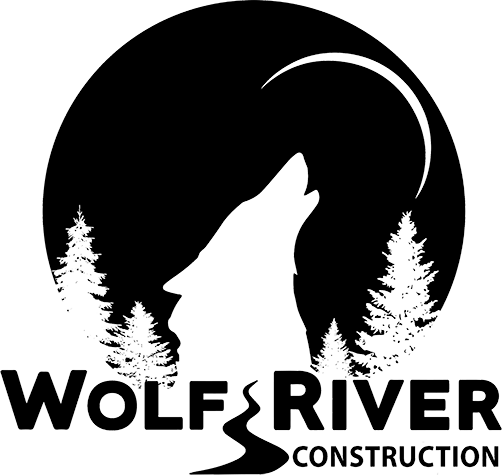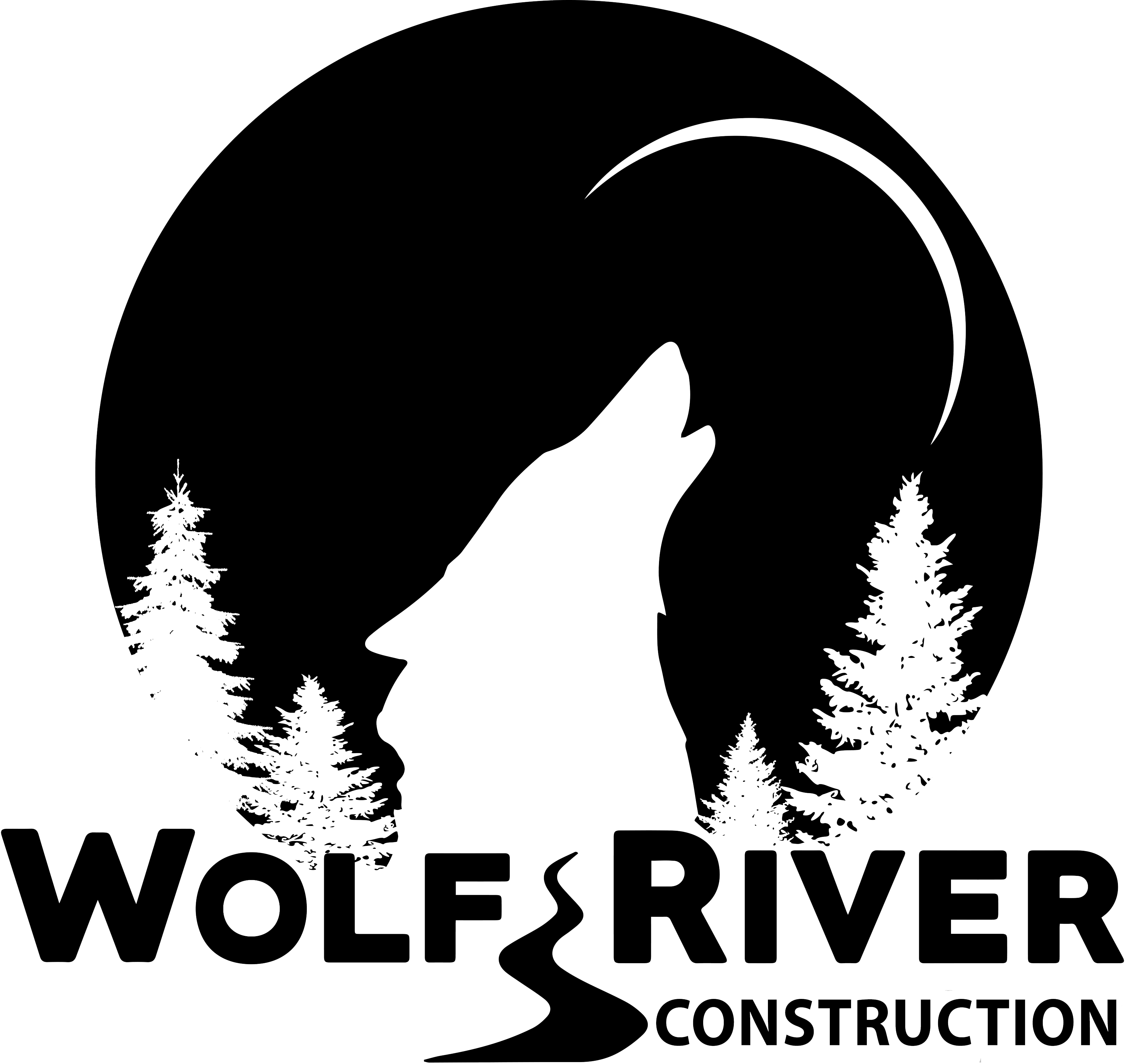How Much Roof Sag is Acceptable
Roof sag, although often overlooked, plays a crucial role in your home’s structural integrity and longevity. At least, as a homeowner or a builder, know the limits of your roof sag. Excessive sag can lead to serious issues, including compromised aesthetics, water drainage problems, and even safety concerns.
As a trusted construction company, Wolf River Construction is committed to ensuring you know how to make informed decisions about your roofing projects. We explore the factors influencing roof sag and provide insights into how much roof sag is acceptable, empowering you to maintain a safe and durable roof.
What Is Roof Sag?
No amount of roof sag is acceptable. Even a slight sag can indicate underlying structural problems that, if left unaddressed, can lead to significant issues such as leaks, compromised insulation, and potential safety hazards.
Therefore, just about any sagging is bad. Take any sign of roof sag seriously and promptly consult with a professional roofing contractor to assess and rectify the situation, ensuring your home’s long-term integrity and safety.
How Do You Check For Roof Sag?
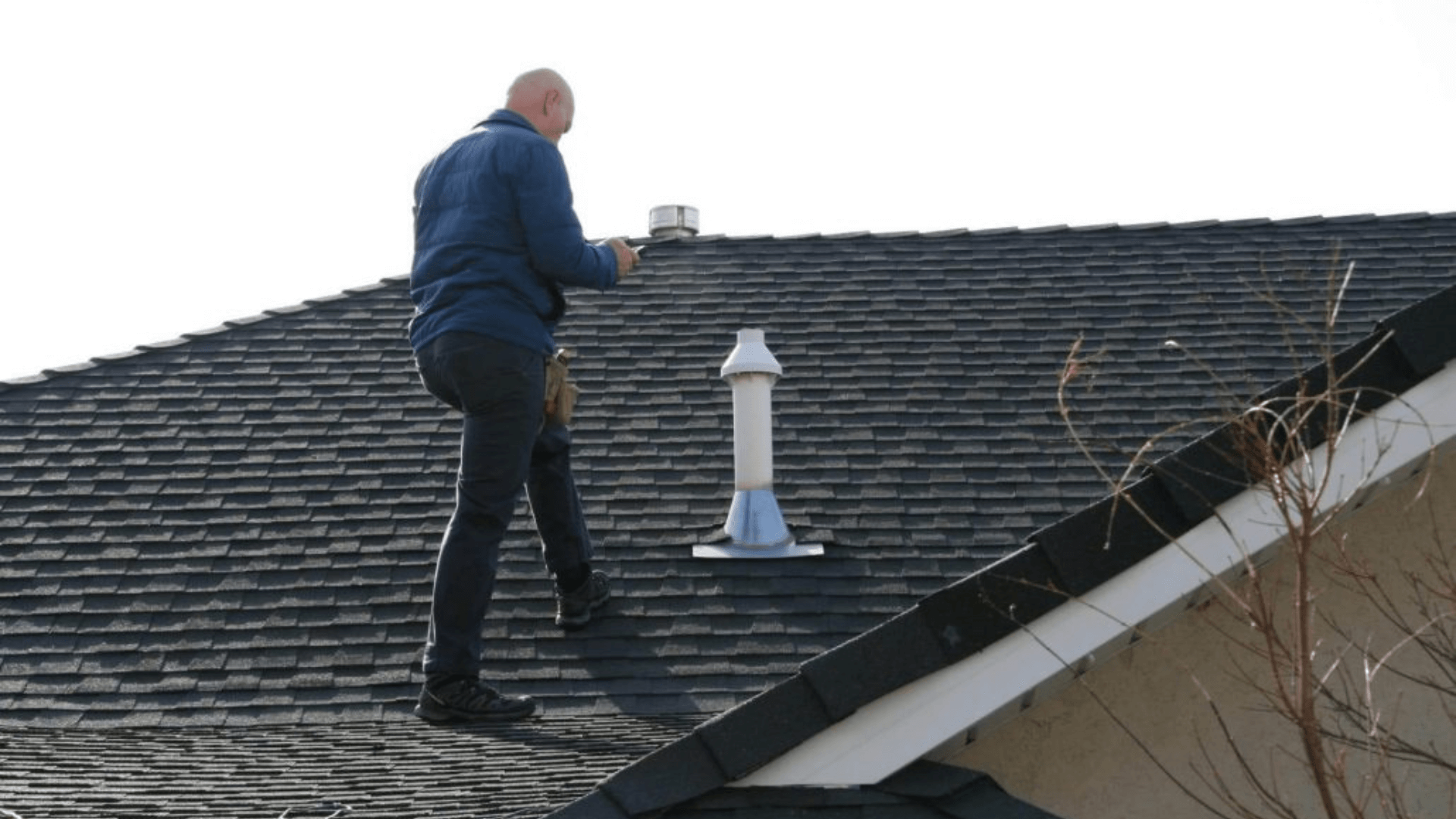
Exterior inspection
To check for roof sag from the exterior, step back and visually inspect your roofline. Look for any noticeable dips or irregularities in the roof’s surface. You can also use a long, straight object like a broomstick or level to check for horizontal alignment.
A professional should investigate any deviations further to determine the cause and extent of the sag.
Interior inspection
For an interior roof inspection, go to your attic or crawl space. Examine the underside of the roof for signs of sagging, such as warped or uneven roof decking, bowing rafters, or visible cracks.
Also, check for daylight seeping through gaps. These issues can indicate structural problems causing the sag and should be addressed promptly by a qualified roofer.
Causes Of Roof Sag
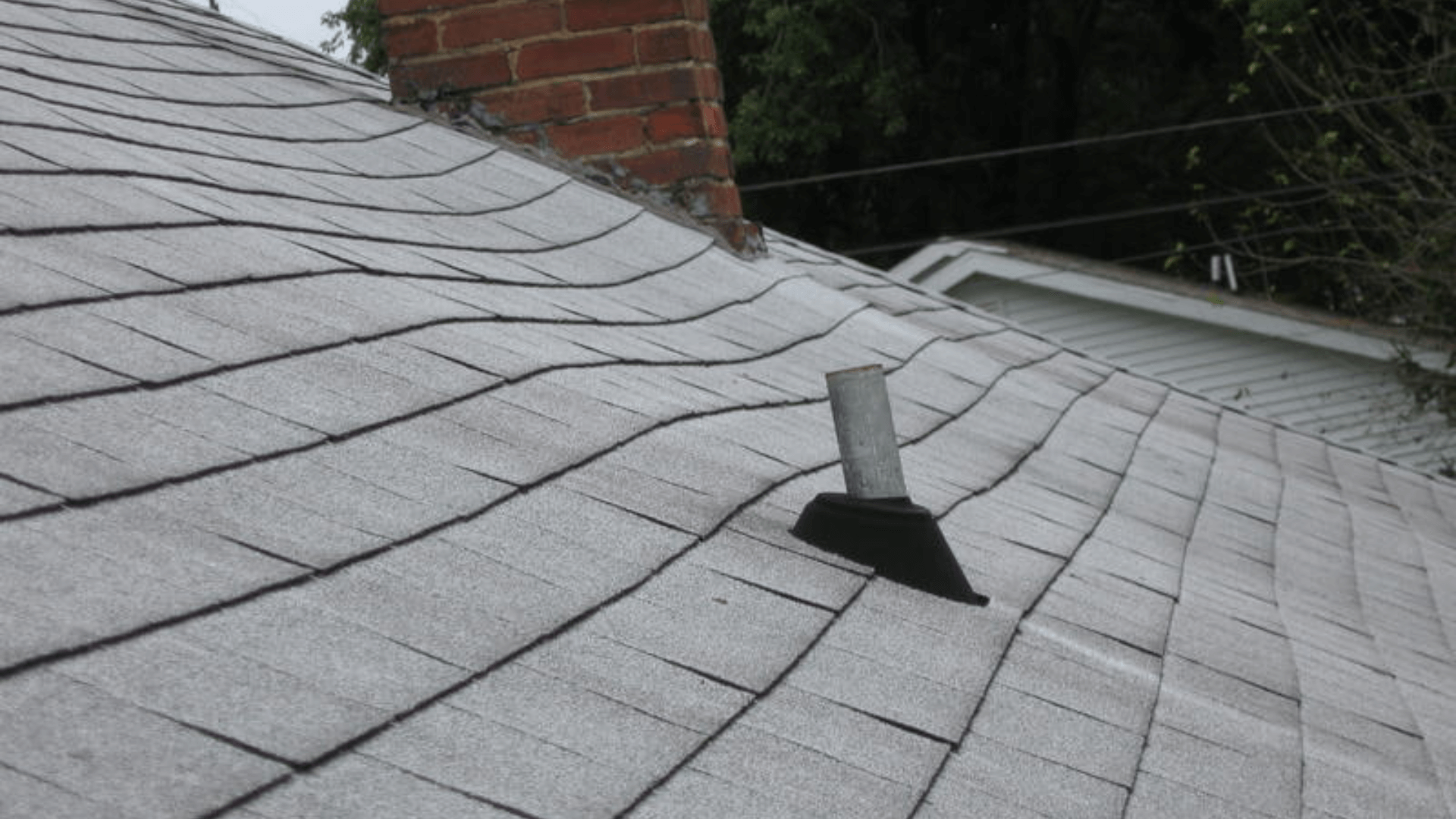
Water damage
Water damage is a common cause of roof sag. It occurs when leaks go unnoticed or unrepaired, leading to the deterioration of structural components. Moisture weakens the roof’s integrity, compromising its ability to bear weight and maintain its shape.
Poor design and work manship
Roof sag can result from initial design flaws or shoddy workmanship during installation. Inadequate support structures, improper materials, or incorrect load calculations can all contribute to sagging over time.
Insufficient internal bracing
Inadequate internal bracing, such as trusses or joists, can’t properly distribute the roof’s weight. This lack of support causes the roof to sag under the strain gradually.
Too much weight
Excessive weight on the roof, whether from heavy snow accumulation, improper storage, or the addition of multiple roofing layers, can lead to structural stress and eventual sagging. When you notice a wavy or curved appearance, chances are your roof is sagging because of weight.
Age
As roofs age, materials can weaken and deteriorate forcing you to replace a new roof. Over time, this natural degradation can result in sagging of old roof, especially if maintenance has been neglected.
Structure issues in the home
Problems with the home’s overall structure, such as settling or foundation issues, can affect the load distribution on the roof. These structural issues can exacerbate roof sag and should be addressed alongside roof repairs to ensure long-term stability.
How To Prevent Roof Sagging
Try the following preventive measures to maintain a structurally sound roof and prevent sagging, ensuring the safety and longevity of your building.
Properly install roof trusses or rafters
Ensure that during the initial roof construction, roof trusses or rafters are correctly installed at the appropriate intervals. Proper spacing and alignment are essential to evenly distribute the roof’s load evenly, reducing the risk of sagging over time.
Use adequate roof support beams
Adequate roof support beams, such as purlins or collar ties, should be integrated into the roof’s structure. These beams provide additional support, reinforcing the framework by preventing excessive deflection and sagging.
Regularly inspect and replace damaged or deteriorating roofing materials
Roofing material plays a crucial role in maintaining the roof’s integrity. Perform regular inspections to identify and promptly replace damaged or deteriorating materials, such as shingles or roofing underlayment, to prevent moisture infiltration that can weaken the structure.
Ensure proper attic ventilation
Proper attic ventilation is vital for preventing roof sagging. Inadequate ventilation can lead to moisture buildup in the attic, which weakens the roof’s supporting structure. Install vents and ensure proper airflow to keep the attic dry and maintain structural integrity.
Avoid excessive snow or water accumulation on the roof
Vigilantly monitor your roof during periods of heavy snow or rainfall. Snow and water accumulation can add substantial weight and stress to the roof.
Safely remove excess snow and ensure clear gutters and downspouts to allow efficient water drainage, minimizing the risk of sagging due to excessive weight.
The Dangers Of A Sagging Roof
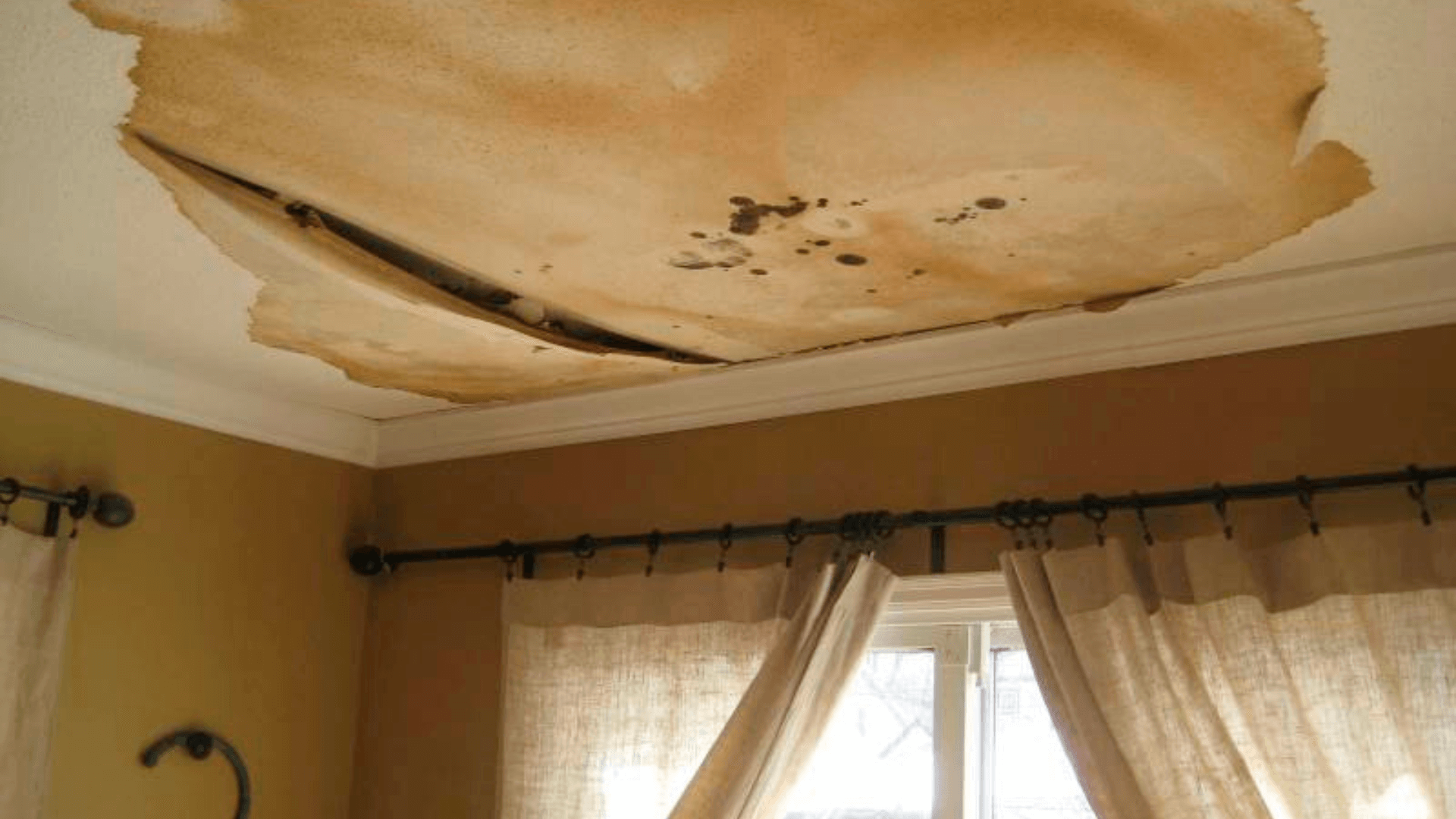
Leaks
A sagging roof often results in compromised roofing materials and weakened structural integrity. This vulnerability allows moisture to penetrate the roof’s protective barrier, leading to leaks and water damage inside your home.
Prolonged exposure to water can cause extensive harm to ceilings, walls, insulation, and even electrical systems, resulting in costly repairs and health hazards due to mold and mildew growth.
Collapse
The most severe danger of a sagging roof is the risk of collapse. As the structural supports weaken under the strain of the sag, the entire roof can give way, posing a significant threat to the safety of occupants and causing extensive property damage.
Roof collapse can result in injuries, extensive structural repairs, and potential fatalities, underscoring the urgency of addressing any signs of sagging promptly and professionally.
Why You Need Proper Maintenance For Your Roof
Here are the reasons emphasizing the necessity of proper roof maintenance for preserving the structural integrity and longevity of your dwelling.
Prolongs roof lifespan
Regular maintenance, such as inspections and minor repairs, helps extend the lifespan of your roof. Addressing issues early prevents them from worsening and potentially requiring costly, full-scale replacements.
Prevents leaks and water damage
Maintenance identifies and fixes potential vulnerabilities, such as damaged roof shingles or flashing. This proactive approach prevents leaks and the resulting water damage, preserving the integrity of your home’s structure and interior.
Saves money in the long run
Investing in routine maintenance is far more cost-effective than neglecting your roof. Small repairs and upkeep are generally less expensive than extensive renovations or replacements needed due to neglected damage.
Enhances energy efficiency
A well-maintained roof contributes to better energy efficiency. Proper insulation, ventilation and sealing prevent heat loss in the winter and heat gain in the summer, reducing your energy bills.
Preserves home value
A well-maintained roof is crucial for preserving your property’s value. A good-quality roof enhances curb appeal and assures potential buyers or appraisers that your home has been cared for.
Prevents mold and mildew growth
Roof leaks caused by neglect can lead to mold and mildew growth in your home’s attic or interior. These can pose health hazards to occupants and require costly remediation.
Mitigates safety hazards
Neglected roofs may sag or develop structural issues that pose safety risks. Regular maintenance helps identify these problems early, preventing accidents or collapses.
Getting Help With Wolf River Construction
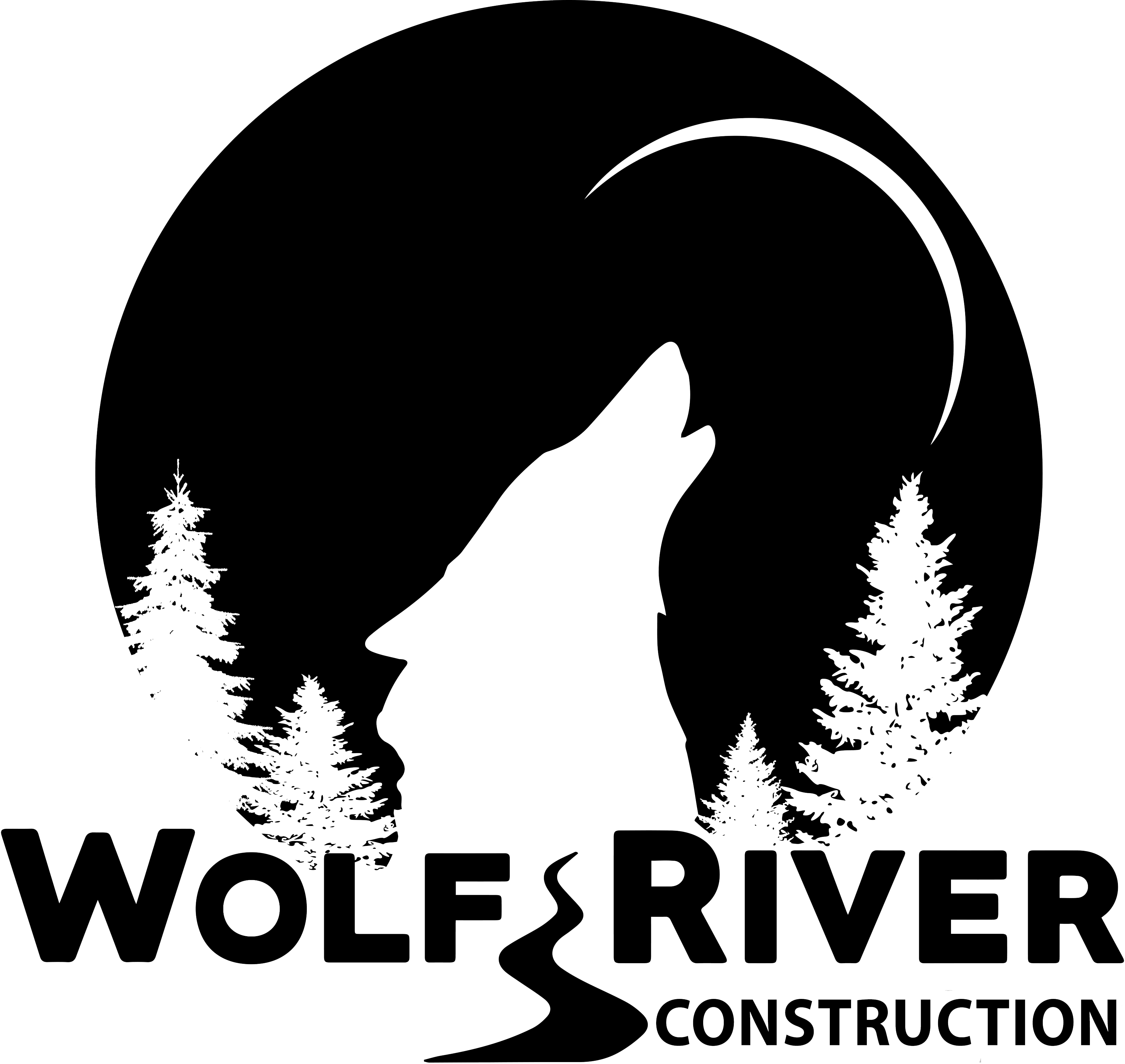
With this guidance, you can make informed decisions regarding your roofing projects. Remember that while some degree of sag may be tolerable, vigilant roof inspections and prompt action in the case of excessive sag will help a long way.
Your home’s safety, aesthetics, and value hinge on a well-maintained roof. Stay informed and proactive and ensure your investment remains secure, dependable, and visually appealing for many years.
For personalized guidance and assistance with your roofing concerns, don’t hesitate to contact us at Wolf River Construction. Let us be your trusted partner in all your roofing projects.
FAQs
In some cases, a sagging roof may require a complete replacement. If the structural damage is extensive or the roof is nearing the end of its lifespan, this is the best time to get your roof replaced . However, a thorough inspection by a professional can determine if localized repairs or reinforcement may suffice.
Yes, a sagging roof can often be fixed. The solution depends on the cause and severity of the sag. Repairs may involve reinforcing the structure, replacing damaged components, or adjusting load distribution. Let us assess and address the specific issues with your sagging roof at Wolf River Construction.
Insurance coverage for a sagging roof depends on the cause of the sag and the terms of your policy. Since roofs sag due to varied factors, you can get your roof replacement through insurance if the sag results from a covered peril, such as storm damage. For precision, contact your insurer and a roofing professional to assess eligibility.
Start by seeking recommendations from trusted sources, then check credentials, licenses, and past project experience. Obtain multiple quotes and review detailed scope of work, warranties, and insurance coverage before making an informed decision. Luckily, Wolf River Construction is a reliable choice for your roof repair.

